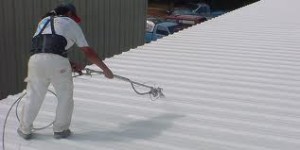Pros and Cons Using Elastomeric Paint
To maximize protection of walls and other outer surfaces of structures, owners usually use elastomeric paint as their first coating option. There are distinct advantages in using elastomeric coatings. However, improper use and application of this versatile protective product may produce inferior protection against the elements.
Consider these advantages and disadvantages when using elastomeric paint:
Advantages
1. Waterproof
They are among the best coatings used for stucco, poured concrete and masonry surfaces because of their waterproofing properties. You are assured that your house is protected from the rain and water damage from properly-applied elastomeric coatings.
2. Thickness
Elastomeric paint is at least 10 times thicker than conventional paints. It attains greater dry film thickness (DFT) than ordinary paints at 10 to 20 mils per coat against 2 to 3 mils for paints. The extra thickness translates to added protection to wall surfaces.
3. Flexible
Elastomerics can stretch and fill small gaps in the wall. They are also very tolerant to small substrate movements. They can serve as flexible coatings between cracks. They can also adopt to expansion and contraction of walls during cold and warm weathers.
4. Durable
A single attractive feature of this product is its durability. Manufacturers, in fact, give up to 10-year warranty for elastomeric coatings compared to the usual 2-year warranty for ordinary paints.
5. Watertight
Its waterproof quality is another reason why owners use this product for their buildings. A direct and positive effect of this is the prevention of shortened and expensive reroofing.
Disadvantages
1. May Produce Lumps
Wrong application will result to lumpy and ugly texture. To remedy, apply multiple coatings instead of just one.
2. Vague Product Description
Some products do not specify the required coatings. A good description must specify the dry film thickness (DFT) and the number of coats required.
3. Requires Experience
Viscosity of elastomeric coatings is different from conventional paints. Inexperienced painters may inadvertently thin and weaken the coating. Water thinning is not recommended because it is difficult to gauge compared to a solvent. Ratio should be 60 to 100 square feet coverage per gallon to achieve ideal thickness.
4. Higher Cost
They are more expensive than ordinary paints.
5. Non-Penetrating
Elastomerics do not penetrate the substrate surface. Larger cracks must be repaired before application of the coating. Be sure to remove dust and dirt before application otherwise adhesion may be affected.
6. Need for Backroll
Backrolling is required after spray coating and before the next application of elastomerics. Most painters do not do this unless specified in the project.


